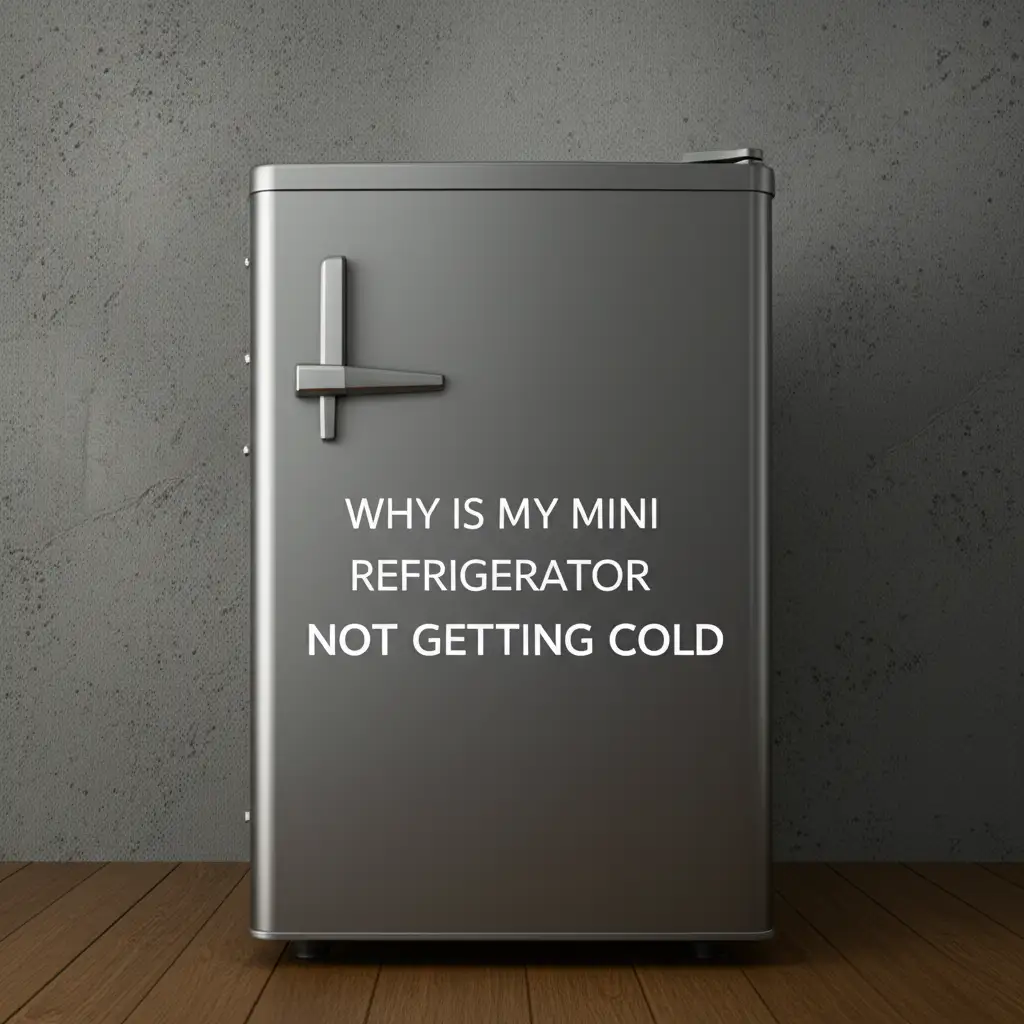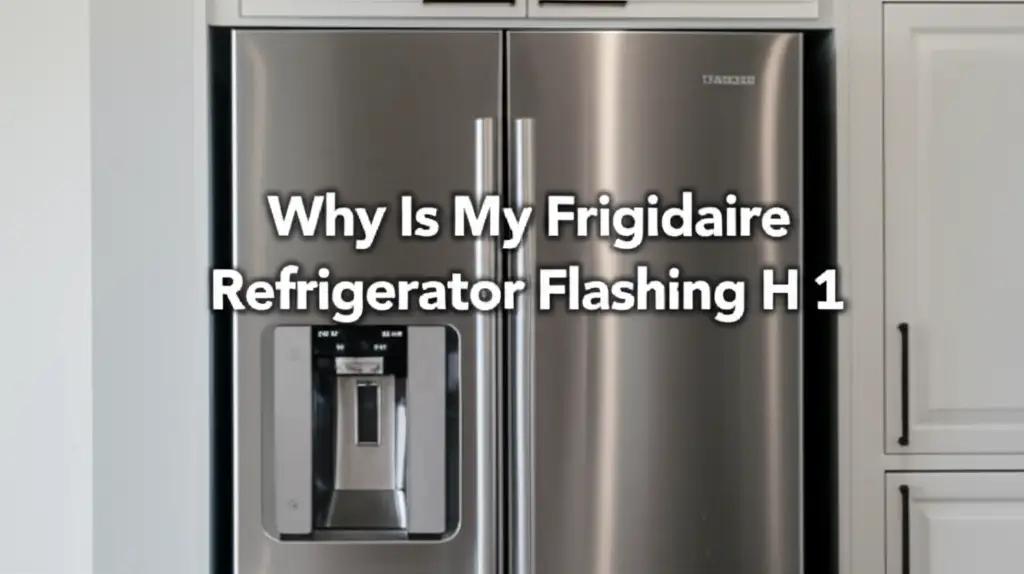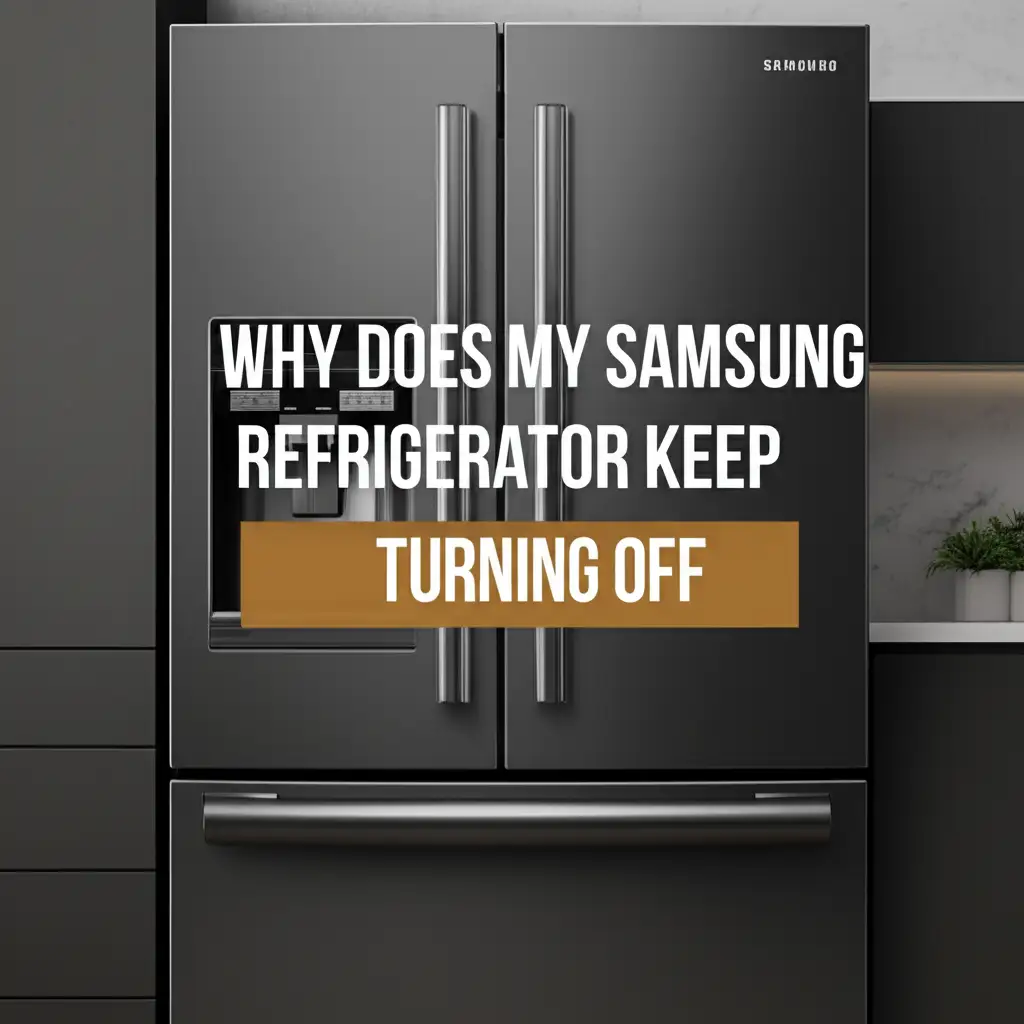· Katria Melrose · Home Appliances · 14 min read
Why Is My Mini Refrigerator Not Getting Cold

Why Your Mini Refrigerator Is Not Getting Cold
Imagine reaching for a cool drink, only to find it lukewarm. This scenario is frustrating, especially when it comes to your mini refrigerator. These compact appliances are essential for dorm rooms, offices, or extra storage. When your mini refrigerator is not getting cold, it disrupts your daily routine. You need quick solutions.
This article explores why your mini refrigerator might fail to cool properly. We cover common problems, from simple power issues to complex component failures. You will learn how to diagnose and fix many of these problems yourself. By the end, you will understand how to restore your mini fridge to optimal working condition.
Takeaway
If your mini refrigerator is not getting cold, check these common issues first:
- Power and Placement: Ensure proper plug connection, dedicated outlet, and good ventilation.
- Door Seal: Inspect for gaps or tears in the gasket.
- Frost Buildup: Defrost the unit fully if ice is excessive.
- Thermostat Setting: Verify the temperature control is set correctly.
- Clean Coils: Clean dust and debris from the condenser coils.
- Fan Operation: Listen for and check the evaporator fan.
- Compressor Health: Listen for the compressor running or cycling.
A mini refrigerator that is not getting cold often points to power supply problems, improper placement, or issues with basic cooling components. Check the power cord, ensure sufficient ventilation around the unit, and inspect the door seal for proper closure. If these basic checks do not resolve the issue, internal components like the thermostat, evaporator fan, or compressor may require attention.
Power and Placement Issues for Your Mini Fridge
When your mini refrigerator is not getting cold, the first step is always to check its power and surrounding environment. Many cooling problems stem from simple external factors. Ensuring your mini fridge receives adequate power and has proper airflow is crucial for its operation. These checks are easy to perform and often resolve the problem quickly.
Check the Power Supply
A mini refrigerator needs consistent power to function. First, verify the power cord is firmly plugged into a working electrical outlet. Sometimes, a loose connection is the only problem. Try plugging another small appliance into the same outlet to confirm it has power. If the outlet works, check the fridge’s internal light. If the light does not turn on, the fridge is not getting power. This could indicate a tripped circuit breaker or a faulty power cord. Reset your home’s circuit breaker if needed. Avoid using extension cords, as they can cause voltage drops or overheat. Your mini fridge needs a direct, stable power source for best performance.
Many refrigerator issues, even in larger units, begin with power. If you have a larger refrigerator not cooling, you might find similar power troubleshooting steps helpful, such as those for a KitchenAid refrigerator not getting cold. Always prioritize safety when checking electrical connections.
Ensure Proper Ventilation
Mini refrigerators generate heat as they cool. This heat needs to dissipate into the surrounding air. If your mini fridge is crammed into a tight space, it cannot release heat effectively. This causes the compressor to work harder and the unit to struggle with cooling. Ensure there is at least a few inches of space on all sides of the fridge, especially the back and top. This allows air to circulate freely. Proper ventilation prevents overheating and maintains efficient cooling. Without good airflow, your mini refrigerator will likely feel warm, not cold.
Poor ventilation makes your mini refrigerator work overtime. It tries to reach the set temperature but fails. Over time, this stress can shorten the lifespan of the appliance. Good airflow is key to preventing this.
Ambient Room Temperature
The room temperature significantly affects how well your mini refrigerator cools. If the room is too hot, the fridge must work harder to maintain its internal temperature. Mini refrigerators are designed for typical indoor temperatures. Placing them in a garage during summer, or another extremely warm area, can overwhelm their cooling capacity. They may struggle to get cold.
Similarly, extremely cold environments can also cause issues. If the room temperature drops too low, some older or cheaper mini refrigerators might not cycle properly. This is because their thermostats are designed for warmer environments. For optimal performance, keep your mini refrigerator in a room with a stable, moderate temperature. This helps it cool efficiently and consistently.
Door Seal and Defrosting Problems Affecting Mini Refrigerator Cooling
Beyond power and placement, the physical integrity of your mini refrigerator plays a vital role in its cooling efficiency. Two common culprits are problems with the door seal and excessive frost buildup. Both issues allow warm air to enter the fridge, forcing the compressor to work harder and often failing to achieve the desired cold temperature.
Inspect the Door Gasket
The door gasket is the rubber seal around the refrigerator door. Its purpose is to create an airtight seal, keeping cold air inside and warm air out. Over time, these gaskets can become brittle, cracked, or loose. When the door gasket is compromised, warm air leaks into your mini refrigerator. This constant influx of warm air prevents the fridge from getting cold. You might notice condensation forming inside or around the door.
To check the gasket, close the door on a piece of paper. If you can easily pull the paper out, the seal is weak. Clean the gasket with warm, soapy water to remove any dirt or food debris. Dirt can prevent a proper seal. If the gasket is visibly damaged, replacing it is often necessary. A good seal is fundamental for efficient cooling.
Sometimes, a refrigerator can be warm inside but still have a working freezer. This often points to issues like a faulty door seal or a blocked air vent inside the unit. These are common problems in larger refrigerators too, as seen with a [GE refrigerator warm but the freezer is cold](https://homeessentialsguide.co m/why-is-my-ge-refrigerator-warm-but-the-freezer-is-cold).
Address Frost Buildup
Many mini refrigerators are manual defrost models. This means they do not have an automatic defrost cycle. Over time, ice and frost accumulate on the evaporator coils inside the freezer compartment. A thin layer of frost is normal. However, if the ice buildup becomes thick, it acts as an insulator. This insulation prevents the evaporator coils from effectively absorbing heat from the fridge compartment. As a result, the mini refrigerator struggles to get cold.
You should manually defrost your mini refrigerator if you see significant ice buildup. Unplug the unit, remove all food, and leave the door open. You can place towels around the base to catch melting water. Never use sharp objects to chip away ice, as this can damage the coils. Once all the ice has melted, clean and dry the interior before plugging it back in. Regular defrosting is essential maintenance for many mini fridges.
For instance, understanding why a standard refrigerator like a Kenmore refrigerator is not cold enough often involves checking for similar frost buildup issues, highlighting the shared principles of refrigeration across different appliance types.
Understanding Your Mini Fridge’s Thermostat and Coils
Once you have ruled out external factors and physical seals, the internal components become the next suspects. The thermostat controls the temperature, and the condenser coils are vital for heat dissipation. Problems with either of these can directly lead to your mini refrigerator not getting cold. These parts work together to regulate and manage the cooling process.
Verify Thermostat Settings
The thermostat controls the internal temperature of your mini refrigerator. If the thermostat is set too high, or if it is faulty, the fridge will not cool properly. First, check the temperature dial or digital display inside your mini fridge. Make sure it is set to a sufficiently cold setting. Most mini fridges have a dial from 1 (warmest) to 5 or 7 (coldest). Try adjusting the setting to a colder number. Give the fridge several hours to respond to the change.
If adjusting the setting does not help, the thermostat itself might be defective. A faulty thermostat might send incorrect signals to the compressor, telling it that the fridge is already cold enough when it is not. Testing a thermostat often requires a multimeter. If you suspect a faulty thermostat, it might be time to consider professional help or replacement if the unit is old.
Clean the Condenser Coils
The condenser coils are located at the back or bottom of your mini refrigerator. These coils release heat from the refrigerant into the room. Over time, dust, pet hair, and debris can accumulate on these coils. This accumulation acts as an insulating layer, preventing the coils from efficiently dissipating heat. When the coils cannot release heat, the cooling process becomes less effective. Your mini refrigerator then struggles to get cold.
To clean the condenser coils, first unplug the mini fridge for safety. Use a vacuum cleaner with a brush attachment or a soft brush to gently remove the dust. Be careful not to bend or damage the delicate coils. Regular cleaning of the condenser coils improves cooling efficiency and extends the life of your appliance. Aim to clean them every 6-12 months.
Proper maintenance, like cleaning condenser coils, is a common solution for many cooling issues, regardless of the refrigerator size or type. For instance, similar advice applies if you find your LG refrigerator is not getting cold.
Fan and Compressor Troubles in a Mini Refrigerator
If your mini refrigerator is still not getting cold after checking power, seals, and coils, the problem might lie with the fan or the compressor. These are critical mechanical components in the refrigeration cycle. The fan helps distribute cold air, and the compressor is the heart of the cooling system. Diagnosing issues with these parts can be more involved.
Check the Evaporator Fan
Many mini refrigerators, especially those with a separate freezer compartment, have an evaporator fan. This fan circulates cold air from the evaporator coils into the main refrigerator compartment. If the evaporator fan motor fails or is obstructed by ice, cold air will not be distributed. The freezer might still get cold, but the main fridge section will remain warm. You might hear a buzzing noise, or no noise at all, if the fan is struggling or not running.
To check the evaporator fan, you usually need to remove the freezer compartment’s rear panel. Before doing this, unplug the fridge. Look for any ice blocking the fan blades. If there is ice, defrost the unit fully. If no ice is present, try to gently spin the fan blade by hand. It should spin freely. If it does not, or if the motor sounds faulty when powered on, the fan motor may need replacement.
Some larger refrigerators also experience issues where the freezer works but the refrigerator section stays warm. This is a common symptom of a failing evaporator fan or a blocked air duct, as explained for a GE refrigerator warm but the freezer is cold. The diagnostic steps are often similar.
Listen to the Compressor
The compressor is the core component that pumps refrigerant through the system, enabling the cooling process. When your mini refrigerator is running, you should hear a low hum, indicating the compressor is working. If you hear no sound at all, or if you hear clicking noises followed by silence, the compressor might be having trouble. A clicking sound often indicates a faulty start relay trying to engage the compressor, but failing.
If the compressor runs continuously without stopping, it suggests the fridge is struggling to reach the set temperature. This could be due to other problems like a refrigerant leak or poor insulation. If the compressor is not running at all, or if it only clicks, testing the start relay or the compressor itself is the next step. This often requires professional expertise and specialized tools. A non-functional compressor means your mini refrigerator simply cannot cool.
Potential Refrigerant Leaks and Professional Help
When all other troubleshooting steps fail, or if you notice specific unusual signs, your mini refrigerator might have a refrigerant leak. Refrigerant is the chemical compound that cycles through the system, absorbing and releasing heat. A leak means there is not enough refrigerant to properly cool the unit. This is a more serious issue that usually requires professional attention.
Signs of a Refrigerant Leak
Refrigerant leaks are less common in mini refrigerators than other issues, but they can occur. If your mini refrigerator is running constantly but still not getting cold, or if you hear a hissing sound, a leak could be present. Sometimes, you might notice a distinct chemical smell. However, refrigerant gas is often odorless, making it hard to detect. Another sign is a sudden and complete loss of cooling capacity. The compressor may run, but the coils will not get cold.
Visually inspecting the coils for oily residue can sometimes indicate a leak. Refrigerant contains oil, and a leak will leave a greasy spot. If you suspect a refrigerant leak, do not try to repair it yourself. Refrigerants are harmful if inhaled and require specialized equipment to handle and recharge. This is a job for a certified technician.
When to Seek Professional Repair
There comes a point when DIY troubleshooting reaches its limit. If you have checked all the common issues – power, ventilation, door seal, defrosting, thermostat, coils, and fans – and your mini refrigerator is still not getting cold, it is time for professional help. Issues like a faulty compressor, a sealed system leak, or complex electrical problems usually require a trained appliance technician. They have the tools and expertise to diagnose and repair these more intricate faults safely.
Consider the age and cost of your mini refrigerator. For very inexpensive or old units, the cost of professional repair might exceed the price of a new one. In such cases, replacing the unit might be a more cost-effective solution. If you decide to replace it, exploring options for a new appliance, like finding what is the best mini refrigerator on the market, can be a good next step.
FAQ Section
Q1: Why is my mini refrigerator running but not getting cold? A1: Your mini refrigerator running but not getting cold often points to internal issues. The compressor might be running but not effectively pumping refrigerant. Common causes include a dirty condenser coil, a faulty evaporator fan, or a problem with the sealed system. Check for proper airflow and cleanliness first.
Q2: How do I reset my mini fridge if it’s not cooling? A2: To reset your mini fridge, unplug it from the power outlet. Wait for at least 15-30 minutes. This allows the compressor and other components to reset. Plug it back in and listen for the compressor to start. This simple step can sometimes fix minor electronic glitches.
Q3: Can a bad thermostat stop a mini fridge from getting cold? A3: Yes, a bad thermostat can certainly stop a mini fridge from getting cold. The thermostat controls the cooling cycle. If it malfunctions, it might incorrectly sense that the fridge is cold enough. This prevents the compressor from running when it should.
Q4: How often should I defrost my mini refrigerator? A4: You should defrost your mini refrigerator whenever the ice buildup on the evaporator coils reaches about a quarter-inch thick. For most manual defrost models, this typically means defrosting every 3-6 months. Regular defrosting ensures efficient cooling and prevents excessive ice from blocking airflow.
Q5: Is it worth repairing a mini refrigerator that isn’t cooling? A5: The worth of repairing a mini refrigerator depends on its age, purchase price, and the cost of the repair. Simple fixes like cleaning coils or replacing a door gasket are often cost-effective. However, complex issues like a bad compressor or refrigerant leak might cost more than buying a new unit.
Q6: Why is my mini fridge making noise but not cooling? A6: If your mini fridge makes noise but does not cool, the noise might be from a struggling fan or a compressor that is trying to start but failing. A buzzing or clicking sound could indicate a faulty start relay or an overworked compressor. Check for airflow blockages around the coils first.
Conclusion
Finding your mini refrigerator not getting cold can be a real hassle, but many issues are surprisingly easy to fix. We have explored a range of potential problems, from straightforward power and placement issues to more involved component failures. Checking the power supply, ensuring proper ventilation, and maintaining a good door seal are excellent starting points. Addressing frost buildup and keeping condenser coils clean are vital for efficient operation.
If these basic checks do not resolve the problem, investigate the thermostat, evaporator fan, and compressor. Remember, some issues like refrigerant leaks or a completely dead compressor often require professional assistance. By systematically troubleshooting, you can often restore your mini refrigerator’s cooling power yourself. If the repair cost outweighs the value, consider investing in a new, efficient model. Your chilled beverages and snacks await!
- mini refrigerator not cooling
- mini fridge warm
- troubleshoot mini fridge
- compact refrigerator repair
- refrigerator troubleshooting





